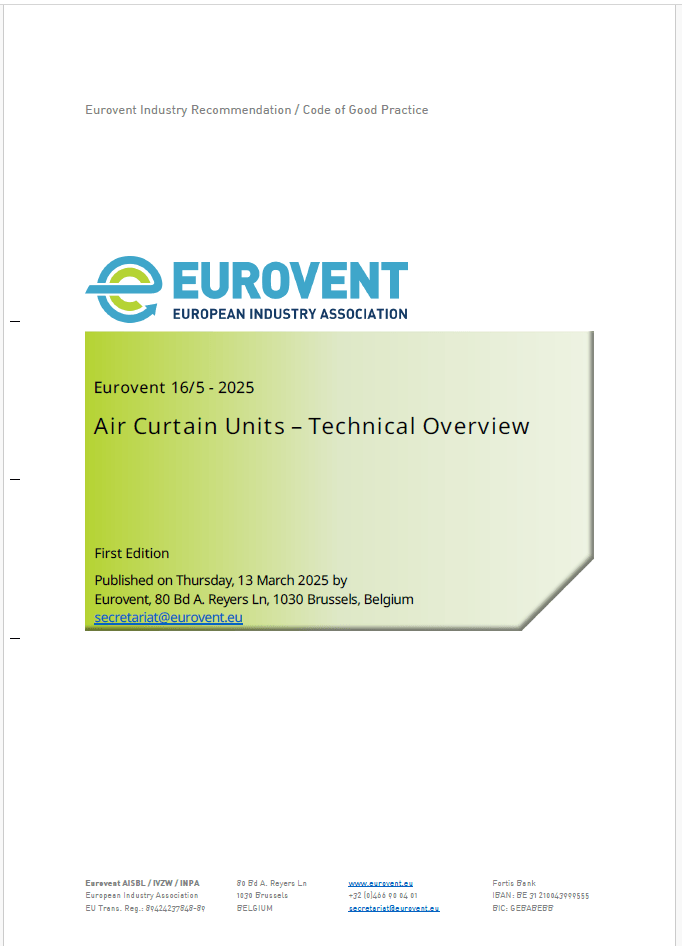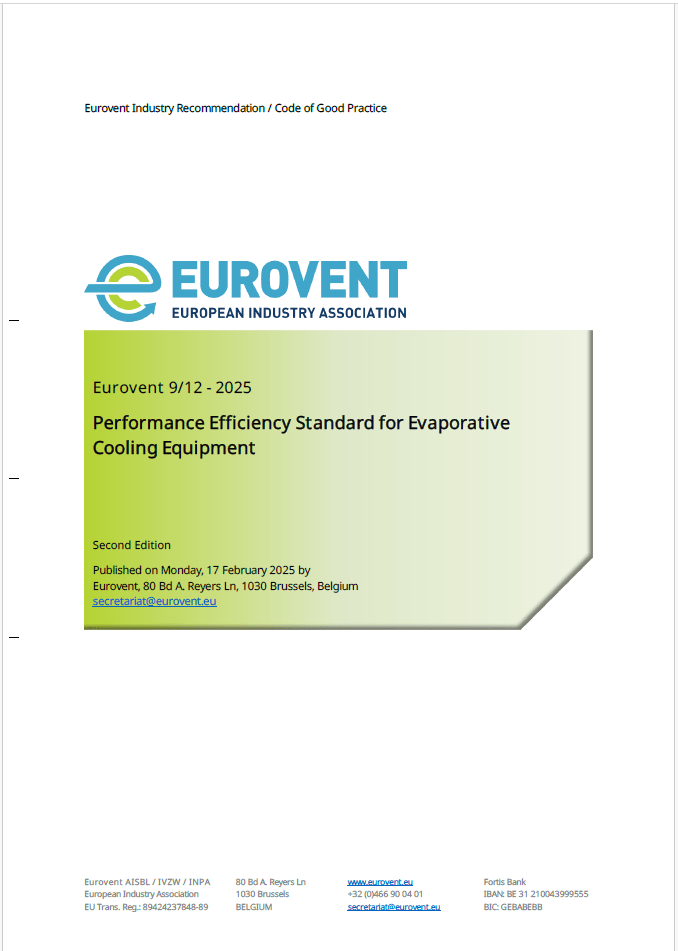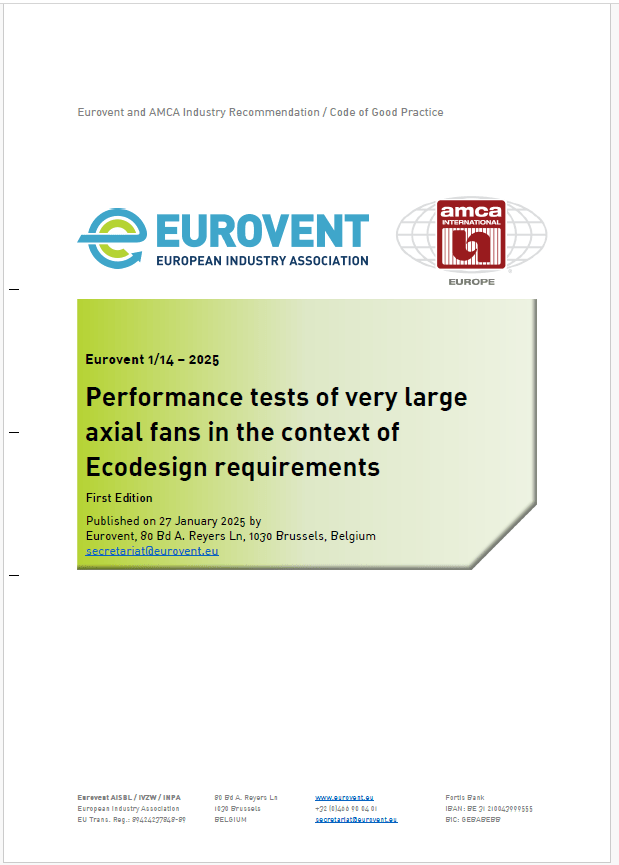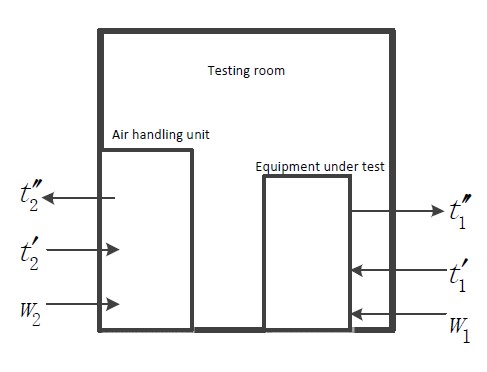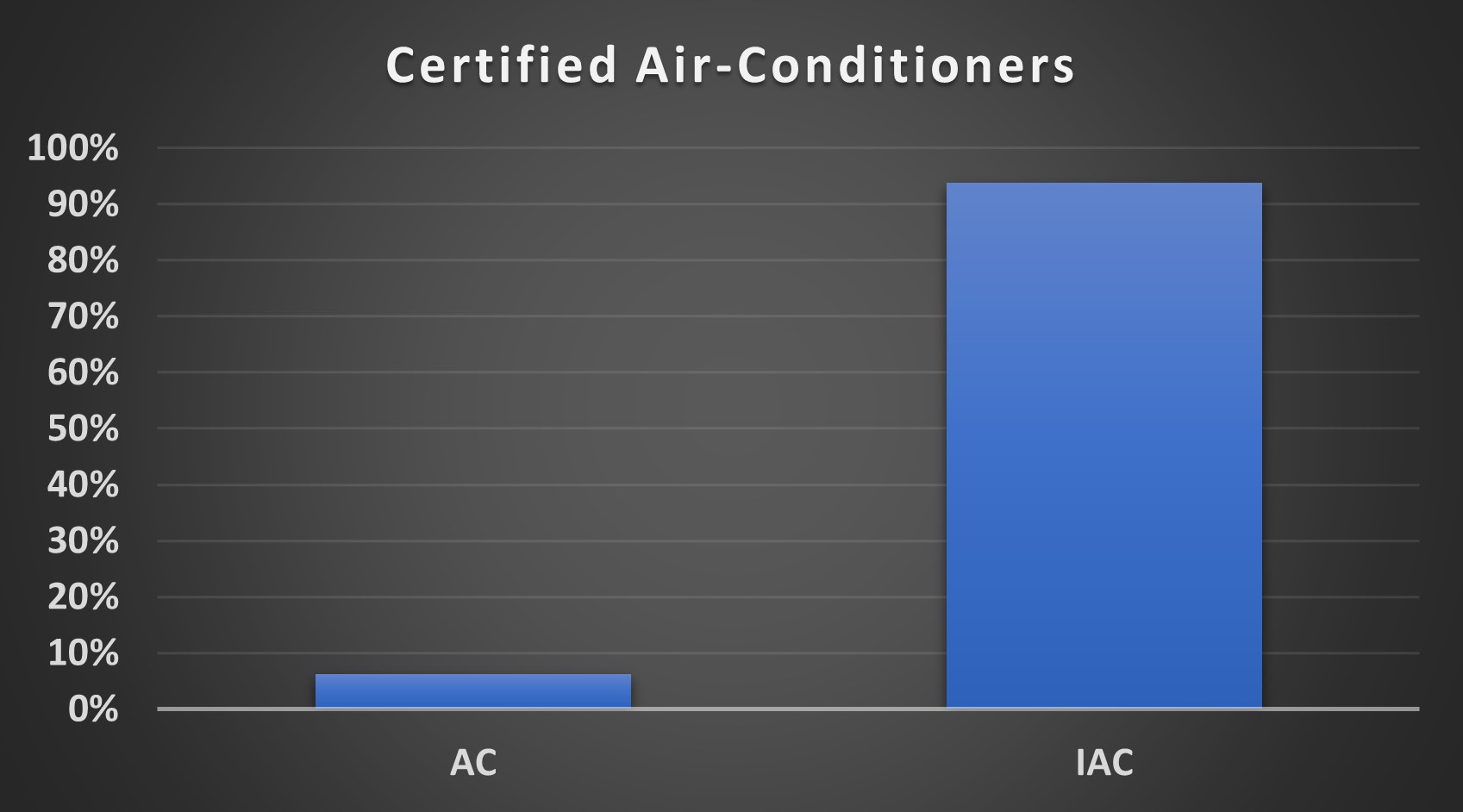Considerable technology advancement in comfort air conditioners designs over the past few decades have seen a substantial development in the variable speed compressor operation (inverter air conditioner). Most of the current international standards allow the intervention when testing these units to provide the setting parameters, while some still forbid it to prevent manufacturer interference.
This study reviews the testing methods of the two types of air conditioners in the different scientific literature and international standards. The results showed that it is not possible to test the IAC unit on a fixed rating capacity without providing the setting parameters such as the compressor speed and frequency and the fan speed. To guarantee no further interference from the manufacturer, using a third-party certification body has showed an efficient solution until further development of the testing methods.
Introduction
Interest for air conditioning (AC) systems has exponentially expanded worldwide throughout the most recent couple of decades. The global market size was valued at 106,6 billion USD in 2020 with an expected compound annual growth (CAGR) of 6,2% until 2028[1]. The expanding rate of electricity and aggressive effect on the environment from power generation pushed to substantial developments in the variable speed compressor (inverter). The inverter segment account for 50% of the market in India [2] and is projected to expand globally at a CAGR of 7,7% [1] in a 6-year period. This growth is attributable to inverter AC’s (IAC) due to the difference in operation comparing to conventional AC’s.
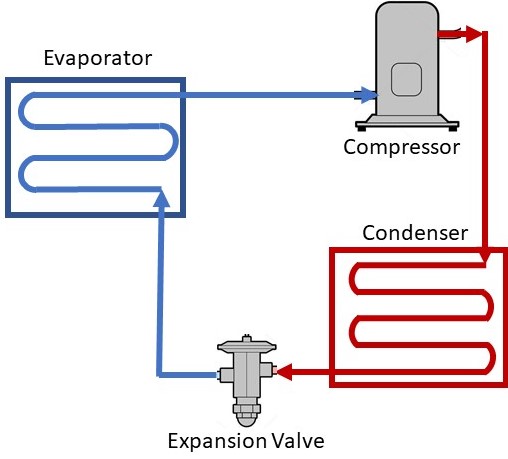
Figure 1: Simple Refrigeration Cycle
An AC is a mechanism designed to maintain and control the air temperature and humidity within an area. The operation is typically performed by a simple refrigeration (vapor compression) cycle (Figure 1).
A typical refrigeration cycle uses an electric motor to drive the compressor. The two most common types of compressors are the ‘fixed speed’ type and the ‘variable speed’ (inverter) types. With conventional ‘fixed-speed’ air conditioners, the compressor is either on (working to 100% capacity) or off. An inverter in an air conditioner is used to change the compressor’s motor speed to drive variable refrigerant flow in an air conditioning system to achieve the desired temperature conditions in indoor space. It maintains the desired temperatures without wild fluctuations. Figure 2 shows the difference in room temperature fluctuation between fixed speed and IAC units. IAC provide ability to control the speed of the compressor motor which helps in continuous regulation of temperature. It also helps in saving energy and power with the help of a variable speed compressor. Additionally, other benefits such as no temperature fluctuations, longer durability, faster cooling, and reduced noise in comparison with non-inverter ACs are expected to fuel the demand for inverter technology.
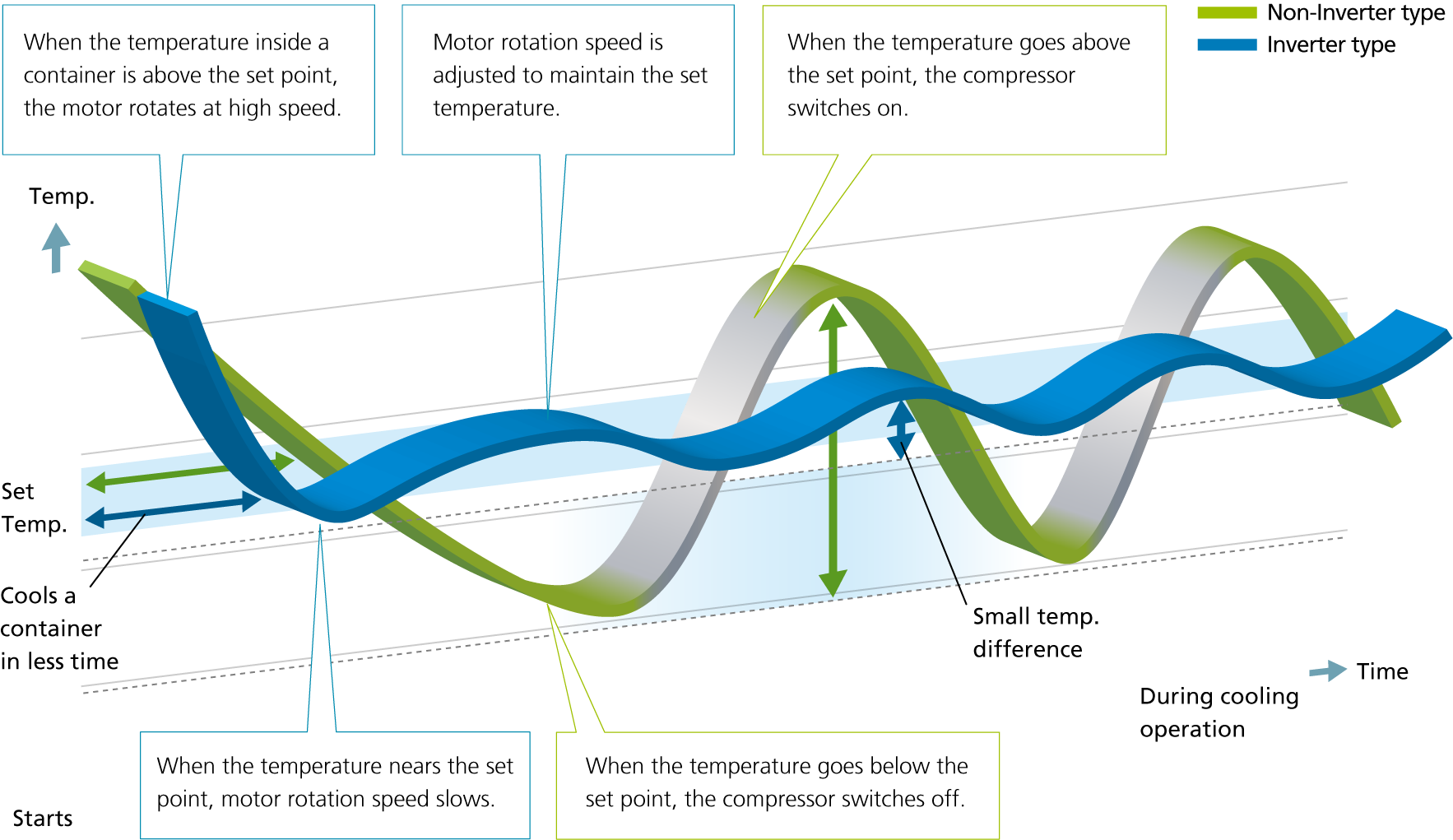
Figure 2: Room Temperature Operation for AC and IAC
The fundamental difference in operation required further investigations through the years to validate the efficiency of testing and rating IAC units using the same methods of conventional AC’s. Mavuri et al. [3] tested IAC using the calorimeter test method. The results showed that to test the IAC on part load on specific room temperature conditions, it should either be in a locked mode where the instruction for fixing the compressor speed is supplied by the manufacturer and the capacity is directly proportional to the compressor speed, either testing the IAC in a field operation mode by fixing a thermal load instead of fixed room temperature or capacity. The dependency of the unit capacity to the compressor frequency has also been showed in a thermal model created by Hui et al. [4]. Another study [5] on the effect of unlocked test using the calorimeter room method on the Minimum energy Performance Standards (MEPS) on IAC results in some unit failing to comply with the MEPS requirements and consumed much higher level of electricity compared to a fixed load or locked capacity test. This result is far from real life performances since it was proven by several field studies that IAC enormously reduce power consumption in comparison to conventional AC’s such as Almogbel et al. [6] who studied the energy consumption of an AC and an IAC for 108 days, and showed 49% less energy consumption of the IAC comparing to conventional AC.
Despite clear scientific evidence of the difference in operation of the conventional AC and IAC, there is no definitive solution in the international regulation to differentiate the testing procedure of these two types of units. This article presents the adopted solutions of the regulation’s commissions in different countries and the feedback and experience of Eurovent Certita Certification (ECC) body for this matter.
Inverter Air Conditioner Testing Schemes
For a variety of HVAC equipment, many testing methods have been developed. Heating balance method (calorimeter room method) and enthalpy difference method are commonly used for testing HVAC equipment.
Calorimeter Room (Figure 3) test heat balance test device is a room air conditioning performance test device. The method of calibrating the performance of air conditioner with calorimeter test bench is called Room heat balance method. The basic principle is based on the law of conservation of thermodynamics (the first law of thermodynamics): that is
Input Energy = Output Energy
The air enthalpy difference method (Figure 4) is a way to test the performance of the air conditioner by measuring the enthalpy and the circulating air volume of the air at the inlet and outlet of the air conditioner. It consists of measuring the enthalpy difference of the inlet and outlet air inside the air conditioner chamber and calculate the air conditioner capacity through the heat exchanger air flow. The enthalpy is measured by measuring the temperatures of dry and wet bulbs (T-Ts method).
| 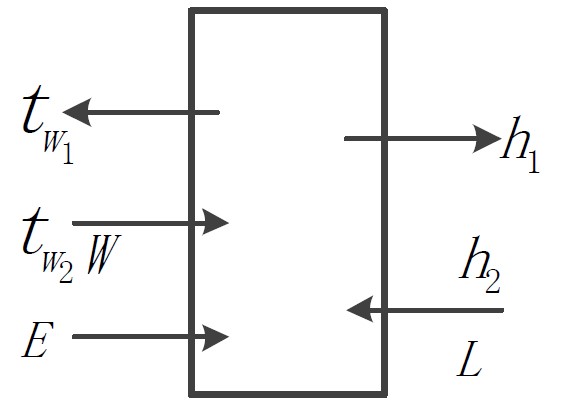 |
Figure 3: Calorimeter room method schematic | Figure 4: Enthalpy difference method schematic |
When testing the IAC freely without setting the parameters from the manufacturer, the capacity of the unit would not be constant even if the ambient temperature is constant. The internal control of the unit will compensate for the thermal load of the room. The IAC unit will be checking the air temperature from time to time using its own censor and will adapt with the capacity being delivered to compensate the thermal load. If the unit determine that the temperature is going down in a cooling capacity test then the unit will realise that the capacity delivered is too much and it will reduce the capacity by reducing the compressor frequency. On the opposite side, if the ambient conditions are going up, then the unit would increase the capacity by increasing the compressor frequency and the fan speed and the electronic expansion valve on both sides of the unit. During the test of IAC, to maintain the unit on a fixed capacity, the operational parameters of the unit should be fixed (compressor frequency, electronic expansion valve and the fan speed).
As one can see from how both testing methods function, the IAC with a variable capacity could not be tested using the calorimeter room method and is too difficult to test using the air enthalpy method. Therefore, in the current state of available technology, testing an IAC should require setting fixed parameters such as compressor speed and frequency and in some cases fan speed and the expansion valve opening. This could be done by manually involving a thermostat included in the unit or automatically with a preset parameters in what is called testing mode. This procedure aims to convert the IAC unit into a fixed speed compressor unit for testing purpose.
International regulations and standards for testing IAC’s
The test procedures for Air Conditioners are slightly different between each governing body. With different climates and equipment markets in each country, the high and low temperature test conditions each test procedure are slightly different. This section discusses the scope of each test procedure and reviews their similarities when testing the IAC’s [8].
ISO
The ISO standard 5151, which is incorporated either by reference or in full by many countries, applies to non-ducted air-cooled ACs and air-to-air heat pumps, and small ducted ACs and heat pumps. The scope of the standard covers both packaged and split systems but limits the split systems to multi-split systems controlled by a single thermostat. The standard specifies that single capacity, variable capacity, and multiple capacity units are also covered.’
Australia
The Australian standard, AU/NZ 3823.4.1, covers air-cooled ACs and air-to-air heat pumps. This test method is the ISO 16358 standard, which incorporates the entire scope of ISO 5151, ISO 13253, and ISO 15042. ISO 13253 covers ducted air-cooled air conditioners and ducted air-to-air heat pumps. ISO 15042 is the test procedure that covers multi-split and multi-circuit non-ducted systems. Both single and variable capacity systems are covered.
China
The Chinese standard GB/T 7725-2004 test procedure applies to non-ducted units with a cooling capacity below 14 kW. The units can be either water-cooled or air-cooled.
European Union
The EU test procedure covers both packaged and split system ACs and heat pumps. These products can be variable capacity by any means, ducted or non-ducted, single-split or multi-split systems. The definition for multi-split from the EU aligns with the US definition (below). As for IAC’s the EN 14511 clearly states that the setting of the frequency shall be done for each rating condition. The manufacturer shall provide in the documentation information about how to obtain the necessary data to set the required frequencies and/or the fan when different from the maximum one to set on the control device for a given rating condition.
It even allows when skilled personnel with knowledge of control software is required for the start of the system, the manufacturer or the nominated agent should be in attendance when the system is being installed and prepared for tests.
Japan
The Japanese standard JIS B 8615-1:2013 and JIS B 9612:2013 applies to packaged and split system ACs with a rated cooling capacity of 10 kW or less. Japan references ISO 5151 for its standard, with country specific adjustments to the testing conditions.
Korea
Korea’s standard KS C 9306 2017 test procedure is limited to packaged and split systems with a rated cooling capacity of 35 kW or less. The main deviation in scope from the other countries is the exclusion of split systems with multiple indoor units.
United States
The test procedure established by the United States was updated in 2017, and a new test procedure will go into effect in 2023. The current test procedure covers both heat pumps and ACs configured as single package units and split system units. The standard specifies that the split system units can be designed as multi-head mini split, multi-split, and multi-circuit systems.
As a US certification body, the AHRI standard 1230-2010 allows skilled personnel from the manufacturer to intervene to set the control software for an IAC. In addition to setting the compressor frequency needed to operate at targeted nominal capacity.
Canada
The Canadian testing procedure are presented in the CSA EXP07 SCOP, ICOP. It allows using both air enthalpy and calorimeter room methods depending on the type of the unit. It covers both fixed and variable speed compressor types.
In all the presented standards, variable capacity units are currently tested at fixed compressor speeds. When installed, the speed of the compressor increases/decreases dynamically to condition the space. To test these units in a fixed-speed mode, a lab/testing body must contact the manufacturer to upload specific software or connect specific equipment to force the unit into a testing mode. The necessity of manufacturer intervention when testing these units opens up the procedure to interference by allowing changes to be made to the unit that are not present when operating in the field.
While there is no other available solution in the present, both Canada and the EU are working to establish dynamic load-based test procedures for room air conditioners and heat pumps. These proposed test methods (CSA EXP07 and EN 14825) use an adaptation of the psychrometric approach to introduce sensible and latent heat loads to the indoor room and test the unit’s control scheme for managing space temperature. The goal of developing these test procedures is to reflect the operation of a unit more closely in the field, which would better characterize unit operation at lower temperatures, better represent the efficiency gains associated with variable speed equipment and eliminate the ability to override controls. There are other initiatives such as keeping the same test method but introducing verification after or before the test to check that the inverter unit run at the same parameters in real life conditions than those used for the test.
These test procedures are in the process of being developed, and some have raised concerns that the inherently dynamic nature of such test approaches may make them difficult to reproduce. Until one of these methods is valid enough, referring to a third-party certification body that controls the communication between the laboratory and the manufacturer could be the best available solution for testing an IAC by allowing the manufacturer to provide the required parameters for testing while ensuring no further modifications or intervention on the unit.
Eurovent Certita Certification (ECC) feedback and experience
Established in 1993, Eurovent Certita Certification is recognized as a world leader in third-party product performance certification in the Heating, Ventilation, Air Conditioning, and
Refrigeration fields. In the Technical Certification Rules document (TCR)[9] for the air conditioners, it covers in its scope Comfort air cooled air conditioners and air/air heat pumps rated up to 100 kW cooling capacity. The program follows the standards EN 14511 and EN 14825 for the testing methods and procedures. All the certified products and performances are available the ECC website [10].
In application of the Certification Manual (CM) and the TCR of the program, ECC forbid any direct communication between the manufacturer and the laboratory. The communications should be restricted with those allowed by the standards such as installation/ start up procedure and information about the compressor frequency and fan speed for the case of inverter. This information is collected using a locked document provided to the manufacturer by ECC and the necessary information are then transferred to the laboratory. Any further required information by the laboratory should be acquired by the intermediate of the certification team.
Currently ECC have 6217 certified air conditioner on its website. The IAC’s represent the larger part of these products (Figure 5). The control of all communication between the laboratory and the manufacturer guarantees the testing body should have all the required information for following the testing standards while restricting the intervention of the manufacturer not allowing any changes to be made to the unit that are not present when operating in the field. This could be visible in the results of the 2020 surveillance campaign where 7% (Figure 6) of the tested seasonal efficiencies has been rerated, even though that the manufacturer provided the setting parameters for the IAC’s as allowed by the standards.
|  |
Figure 5: Certified Air Conditioner by ECC following 2021 campaign | Figure 6: test results for the 2020 qualification campaign |
Conclusion
IAC and AC have a different type of compressor and though different functionality. According to the reviewed established test procedure, IAC’s are currently tested at fixed compressor speeds. To achieve that, the current test standards allow IAC manufacturer to lock the compressor speed for a desired rated capacity. This could be done by setting the parameters of the unit on each of the targeted capacity tests. This requires an allowed intervention of the manufacturer when testing these units which opens the procedure to interference. The EU and Canada are working on other test methods to prevent this intervention, in the meanwhile using a third-party certification body such as ECC proved to be an efficient method to perform the test while guaranteeing the minimum required intervention of the manufacturer.
References
[1] Grand View Research, “Air Conditioning Systems Market Size, Share & Trends Analysis Report By Type (Unitary, Rooftop, PTAC), By Technology (Inverter, Non-inverter), By End-use, By Region, And Segment Forecasts, 2021 – 2028,” 2021. Accessed: Apr. 01, 2022.
[2] Ankur Sharma, “Room air conditioners Focus shifting to inverters,” Motilal Oswal, Apr. 2017. https://www.motilaloswal.com/site/rreports/html/636288151341015916/index.htm (accessed Apr. 01, 2022).
[3] S. Mavuri, “Testing inverter type air conditioners for field performance,” Ecolibrium, pp. 44–49, 2014, [Online]. Available: www.gzlans.com
[4] H. Hui, Y. Ding, and M. Zheng, “Equivalent Modeling of Inverter Air Conditioners for Providing Frequency Regulation Service,” IEEE Transactions on Industrial Electronics, vol. 66, no. 2, pp. 1413–1423, Feb. 2019, doi: 10.1109/TIE.2018.2831192.
[5] S. Mavuri, “Field Behaviour of Inverter Air Conditioners Effect on Seasonal Performance,” I nternational Journal of Application or I nnovation in Engineering & M anagement (I JAI EM ), vol. 4, no. 8, Aug. 2015, [Online]. Available: www.ijaiem.org
[6] A. Almogbel, F. Alkasmoul, Z. Aldawsari, J. Alsulami, and A. Alsuwailem, “Comparison of energy consumption between non-inverter and inverter-type air conditioner in Saudi Arabia,” Energy Transitions, vol. 4, no. 2, pp. 191–197, Dec. 2020, doi: 10.1007/s41825-020-00033-y.
[7] G. Du, S. Zhou, Y. Zhou, and X. Liu, “ScienceDirect ScienceDirect Design of Performance Testing System for HVAC Based on Enthalpy Difference Method,” Procedia Engineering, vol. 205, pp. 2156–2163, 2017, doi: 10.1016/j.proeng.2017.10.035.
[8] R. Carmichael, S. Widder, N. Baker, and J. Dewitt, “Domestic Air Conditioner Test Standards and Harmonization,” Washington, Mar. 2020.
[9] “AC | Eurovent Certita Certification.” https://www.eurovent-certification.com/en/third-party-certification/certification-programmes/ac (accessed Apr. 04, 2022).
[10] “Eurovent Certita Certification.” https://www.eurovent-certification.com/en/ (accessed Apr. 04, 2022).
[11] “Technologies | Daikin Reefer.” https://www.ref.daikin.com/zestia/technologies (accessed Apr. 01, 2022).








